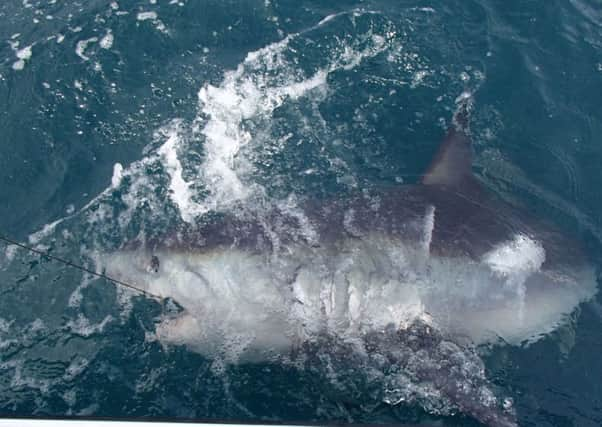Number crunching: what are the odds of a shark attack in Scotland?


It’s not a constant fear, of course – if it was, nobody would ever go surfing again – but even the most rational wave-riders are susceptible from time to time. The kind of scenario that spooks people usually goes something like this: it’s late in the day, perhaps around sunset (which, as everyone knows, is feeding time) and after a busy afternoon the beach is mostly deserted. You’ve promised yourself one last wave but there’s a lull, so you find yourself sitting out there all alone in the gathering dark, in deep-ish water, with nothing much to occupy your mind. You have your eyes on the horizon, waiting for the next set to lump into view when – “gloop” – you hear something break the surface of the water just behind you. You turn around but all you can see are ripples. Was it a fish jumping? A seal popping up his head to check you out? Or something bigger? Surfers don’t typically envy kayakers, but this is one situation in which having your legs encased in a big plastic lozenge seems infinitely preferable to having them dangling down into the big blue.
Of course, some places are less sharky than others, and one of the advantages of surfing in Scotland is the relatively low chance of encountering the men in grey suits. That said, however, the news last month that a fishing boat operating off the Fife coast in the Firth of Forth had encountered a porbeagle shark – a smaller but not-that-much-smaller cousin of the great white – was a reminder that sharks are not entirely unknown in these parts. This one was between seven and eight feet long and, judging by the video footage, almost entirely composed of pure, blind fury.
Advertisement
Hide AdAdvertisement
Hide AdStill, for those of a nervous disposition it’s worth bearing in mind that the number of fatal shark attacks on surfers in Scottish waters still stands at a big fat zero. A few years back I interviewed an Aberdeenshire surfer called Andrew Rollo who had been “bumped” by a porbeagle while surfing at Spey Bay, but that’s the only such incident on record – and anyway, experts don’t think the Rollo bumping, as it’s never been called until just now, was an attack as such. According to Richard Peirce, chairman of conservation charity The Shark Trust, it was a rare example of “very un-porbeagle-like behaviour” as porbeagles normally avoid human contact. “I should know,” Richard told me, “I’ve spent 20 years trying to film and photograph them and they always run away.”
My own personal shark fear highlight came about ten years ago when I was in Tasmania, writing about an adventure race called the Mark Webber Challenge for this newspaper, in which the eponymous Formula One driver invited celebrity sportspeople from around the world to cross the island from north to south using bikes, kayaks, whitewater rafts, railway handcars and more. The hacks following the race had been invited to sample some of the stages, and on the mountain bike stage I managed to catapult myself over the handlebars, taking a chunk out of my knee. A couple of days later, my knee still oozing blood, I was getting ready to go surfing at a place called Calton Rivermouth when Josh, the medic on the trip and also our surf guide, came at me brandishing a roll of clingfilm. To begin with I thought he was wanting to wrap my leg to make it easier for me to get into my wetsuit, but no – he explained that as we were going to be surfing just around the corner from a seal colony (basically the great white equivalent of McDonald’s) and as sharks can smell blood in the water from a quarter of a mile away, this was more of a safety measure. I encouraged him to use the whole roll, and then spent the next few hours trying my best not to bleed.
As it turned out we didn’t see so much as a dorsal fin, which means that either a) Josh is a black belt with a roll of cling-film or b) even if you spend several hours bobbing around near a seal colony while bleeding, chances are you won’t get eaten by a shark. And if I didn’t get eaten in Tassie while bleeding, the odds of getting eaten in Scotland while not bleeding must be pretty long – well north of 3.7 million to one, in fact.